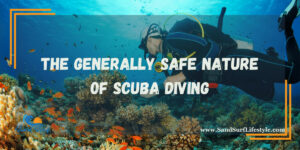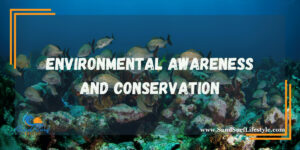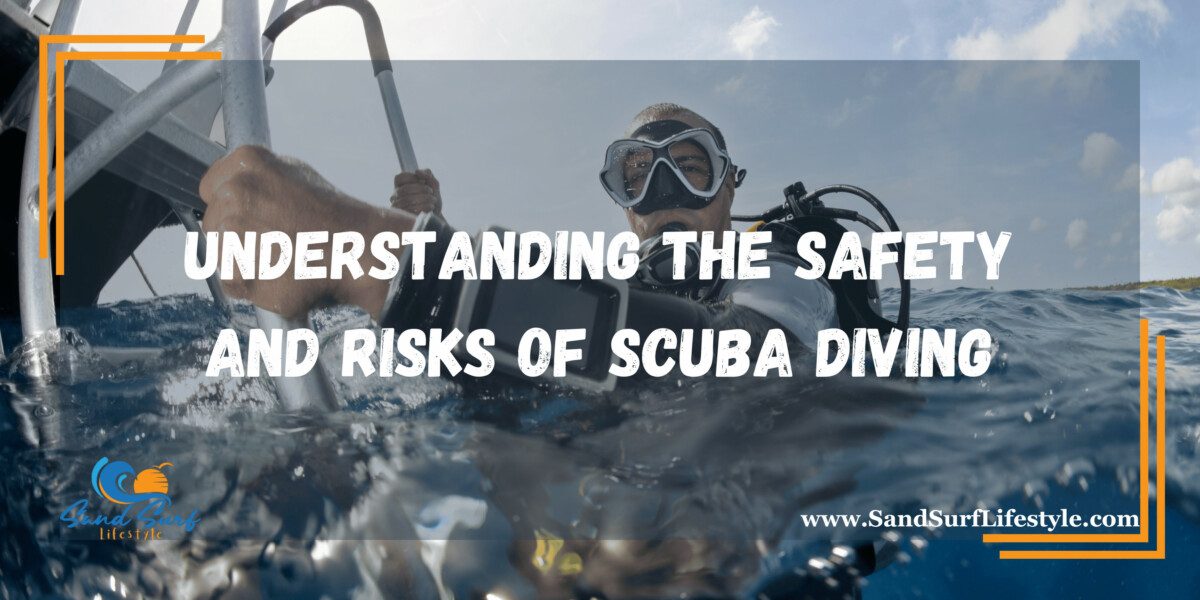Scuba diving is a captivating and exhilarating activity that allows individuals to venture into the mysterious underwater world. While it offers unparalleled opportunities to witness marine life up close and explore stunning underwater landscapes, it’s important to acknowledge that scuba diving, like any adventurous pursuit, carries certain risks.
The Generally Safe Nature of Scuba Diving

Scuba diving stands as a generally safe and exhilarating recreational pursuit, but its safety hinges on strict adherence to appropriate training, equipment utilization, and established safety guidelines. Over time, the landscape of scuba diving has been transformed by modern technological advancements, innovative training approaches, and meticulous safety protocols. These elements collectively contribute to bolstering the overall safety of the sport, offering enthusiasts an opportunity to explore the underwater realm with a heightened sense of security.
Every year, a multitude of divers from around the world partake in the captivating adventure of underwater exploration, and the majority of them navigate these depths without encountering severe issues. This positive track record underscores the effectiveness of safety measures and the dedication of diving organizations to ensure the well-being of participants.
Yet, it’s imperative to acknowledge that, despite its allure, scuba diving does carry inherent risks that demand vigilance and preparedness. The underwater environment introduces unique challenges, such as pressure changes and the potential for medical complications like decompression sickness. These risks necessitate an acute awareness of the surroundings and the application of learned safety protocols.
The intrinsic safety of scuba diving arises from a comprehensive ecosystem of factors: comprehensive training that imparts crucial skills, meticulous equipment maintenance, and the meticulous observance of established safety guidelines. Engaging in scuba diving is a thrilling endeavor that rewards participants with awe-inspiring sights and experiences, provided they prioritize their safety and remain equipped with the knowledge to navigate potential hazards. The interplay between technological innovation, educational expertise, and individual vigilance harmonizes to elevate scuba diving’s safety profile, facilitating the fulfillment of underwater dreams while minimizing risks.
To learn about the best scuba diving practices with safety and respect, check out this article.
Common Medical Issues and Preventive Measures
Amidst the realm of scuba diving, a spectrum of common medical concerns emerges, ranging from minor inconveniences to preventable discomforts. One such concern is the dreaded sunburn, a result of extended sun exposure while on the surface between dives. To safeguard against this, diligent divers are advised to arm themselves with waterproof sunscreen, fortifying their defense against the sun’s potent rays. Augmenting this protection, donning suitable protective attire like rash guards and wide-brimmed hats further shields the skin from unwelcome burns, ensuring uninterrupted enjoyment of the aquatic realm.
In the orchestra of discomforts, seasickness occasionally takes the stage, potentially dampening the spirits of eager divers. However, deftly mitigating its impact, the introduction of anti-nausea medications presents a viable remedy to counteract the unsettling effects of waves and motion. Moreover, a judicious selection of dive sites boasting calm waters can alleviate the onset of seasickness, enabling divers to embark on their underwater odyssey with steadier equilibrium.
Dehydration, an ever-present adversary, poses a pronounced threat in warmer climates. Counteracting this risk mandates proactive hydration—imbibing ample fluids—to quench the body’s thirst and stave off the potential consequences of fluid depletion. Exercise of prudence is paramount, with divers steering clear of excessive alcohol consumption before plunging into the deep, as such indulgence only exacerbates dehydration’s grasp.
As divers prepare to descend into the depths, vigilance over these common ailments stands as a testament to their commitment to an enjoyable and untroubled underwater voyage. By recognizing the avenues through which sunburn, seasickness, and dehydration can encroach upon the diving experience, divers empower themselves to don the armor of prevention, allowing them to fully relish the majesty of the aquatic world without the shadows cast by avoidable discomforts.
The Severe Risks and Their Mitigation
In the world of scuba diving, while an aura of safety pervades the activity, it’s imperative to cast a spotlight on more profound risks that demand unwavering attention. Two formidable adversaries, arterial air embolism and decompression sickness, loom as potentially life-threatening specters, arising from the consequences of hasty ascents after dives. Arterial air embolism emerges as a dire consequence of air bubbles infiltrating the bloodstream, impeding blood flow and potentially inducing stroke-like symptoms that endanger the diver’s well-being. On the parallel path, decompression sickness—often colloquially dubbed “the bends”—materializes when dissolved gases within bodily tissues coalesce into bubbles during abrupt ascents, inflicting anguish through joint pain, neurological distress, and, in graver instances, paralysis.
A countermeasure of paramount importance resides in the meticulous observance of safe ascent protocols. Forging a shield against these lurking dangers necessitates the inclusion of mandatory decompression stops when deemed essential. To actively thwart such perils, divers should vigilantly monitor their underwater depth and time, employing dive tables or dive computers as tools to compute permissible bottom intervals and the pace of ascent. The crux of the matter lies in the gradual, deliberate rise from the depths—an approach that curtails the accumulation of nitrogen in bodily tissues, the fundamental catalyst for the onset of these formidable conditions.
In light of these challenges, adherence to established practices attains heightened significance, ensuring the equilibrium between the pursuit of underwater exploration and the preservation of well-being. By embracing the tenets of responsible diving, enthusiasts defy the shadows of these risks, embracing the profound beauty of the ocean depths while safeguarding the sanctity of their personal safety.
Equipment Reliability and Preparation
In the intricate tapestry of scuba diving safety, the reliability of equipment emerges as an unwavering cornerstone. Anchored by diligent maintenance, judicious storage, and meticulous pre-dive evaluations, equipment integrity forms a bulwark against untimely malfunctions beneath the waves. The triumvirate of regulators, buoyancy control devices (BCDs), and dive computers—tools that navigate divers through the aquatic realm—merit particular scrutiny, necessitating comprehensive inspections to unearth any leaks, discern damage, and ascertain the veracity of readings. As an obligatory prelude to each dive, these examinations lay the foundation for an expedition grounded in trust and assurance.
Yet, the dance of safety doesn’t culminate solely in equipment scrutiny; it extends to the orchestration of preparation and response. A diverse curriculum of training is indispensable, equipping divers with the mastery of emergency procedures that serve as compasses in tumultuous waters. The capacity to share air with a buddy or navigate the labyrinth of equipment failure not only solidifies individual competence but also engenders collective cohesion, as divers coalesce into a network of vigilance and support.
The symphony of safety rests upon these multifaceted pillars, where equipment fidelity harmonizes with personal proficiency. The unerring rhythm of regular equipment maintenance and the meticulous choreography of pre-dive checks, all accompanied by the resounding crescendo of training in adversity, usher in a diving experience fortified against the caprices of unpredictability. It’s in this symphonic synthesis that divers transcend potential challenges, carving out a passage of exploration and wonder that remains underscored by the unwavering commitment to a secure and harmonious dive.
Environmental Awareness and Conservation

The allure of the underwater realm carries with it an inherent responsibility—an obligation for divers to harmonize their aquatic exploration with the preservation of the delicate marine environment. In this symbiotic dance between human curiosity and ecological safeguarding, divers are called upon to be stewards of the oceans, embracing practices that transcend personal safety and extend to the realm of underwater conservation.
Buoyancy control and fin techniques emerge as paramount tools in this endeavor, offering divers the means to navigate the underwater expanse with finesse and precision. The mastery of these techniques safeguards against inadvertent contact with fragile coral reefs and the myriad forms of aquatic life that populate the ocean’s tapestry. A touch, however fleeting, can set off a chain reaction of disturbance that reverberates far beyond the initial point of contact.
Further compounding the importance of conscious conduct is the recognition that marine creatures are not just passive observers of the divers’ presence. Some species possess defensive mechanisms that can manifest harm to those who unwittingly encroach upon their space. By abstaining from touching or disturbing marine life, divers play a crucial role in minimizing stress on these delicate ecosystems.
Responsible diving isn’t limited to actions; it’s a holistic approach that extends to choices. The decision to abstain from removing or collecting marine souvenirs speaks volumes about a diver’s commitment to preserving the underwater world for the generations that follow. Each coral fragment left undisturbed, each marine creature allowed to thrive undisturbed, contributes to the longevity of this intricate ecosystem.
In the undersea ballet of exploration and conservation, responsible divers are both choreographers and participants. They navigate with an awareness that transcends the allure of the underwater world, embracing the role of guardians who ensure that their presence leaves no trace of ecological harm. It’s through their harmonious dance that the oceans remain as breathtaking for future generations as they are for the present explorers.
To learn how safe scuba diving is, check out this article.
Conclusion
Scuba diving offers a unique opportunity to explore the wonders of the underwater realm, but it’s essential to approach this activity with awareness and preparedness. While scuba diving is generally safe when proper training, equipment, and safety guidelines are followed, it’s important to acknowledge the potential risks associated with the sport. By understanding and mitigating these risks, divers can embark on exciting underwater adventures while prioritizing their safety and the conservation of the marine environment. Remember, the beauty of the oceans is there to be admired, respected, and safeguarded as we continue to explore its depths.
Please note that the contents of this blog are for informational and entertainment purposes only and should not be construed as legal advice. Any action taken based on the information provided in this blog is solely at your own risk. Additionally, all images used in this blog are generated under the CC0 license of Creative Commons, which means they are free to use for any purpose without attribution.

